By plane
Air travel in Vietnam is convenient and safe. It saves time, especially for long distances where flight time is only a few hours. Additionally, there are many services available at the airport, such as food and drink, SIM cards, free Wi-Fi, currency exchange, and more. You can easily book tickets online or via a travel agent.
Using this sort of transportation in Vietnam is always a top priority choice for optimizing travel time, allowing you to have more experiences at your destination.
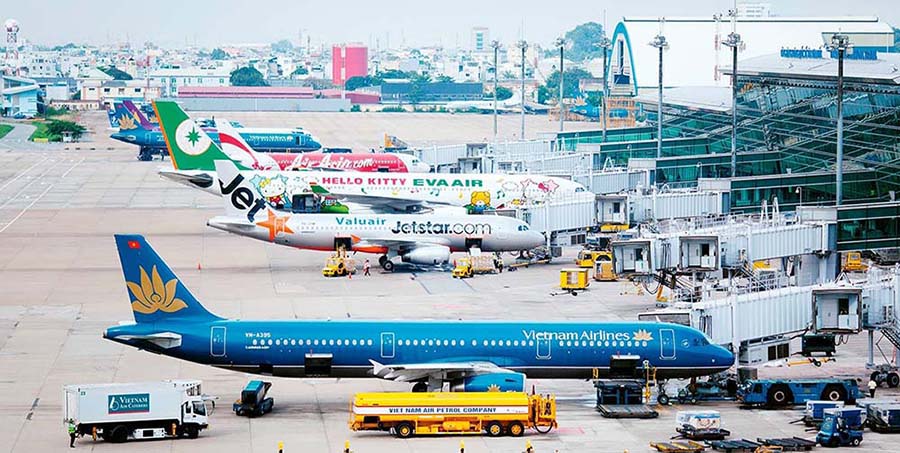
Vietnam popular domestic airlines: Vietnam Airlines, Vietjet Air, Bamboo Airways and Vietravel Airlines.
Domestic flights to popular destinations (economy class):
- Hanoi - Ho Chi Minh City: 1,300,000 – 2,400,000 VND ( about 55 - 102 USD)
- Hanoi - Da Nang: 960,000 - 2,500,000 VND ( about 41 - 107 USD)
- Ho Chi Minh City - Nha Trang: 680,000 - 1,360,000 VND ( about 29 - 58 USD)
- Hanoi - Phu Quoc: 1,100,000 - 5,500,000 VND ( about 47 - 235 USD)
- Ho Chi Minh City - Phu Quoc: 640,000 - 2,000,000 VND (about 27 - 85 USD)
In addition to some regular advice such as booking tickets early, arriving at the airport 2 hours before your flight, keeping track of your flight information, preparing documents, and complying with the airline's regulations, here are some more advice when using this transportation in Vietnam:
- If flying from another country to Vietnam, make sure to obtain a visa early to avoid affecting the flight schedule due to immigration issues.
- Airlines in Vietnam have different regulations on luggage weight so you might need to check for the appropriate airline based on your luggage needs.
- You can check in online on your phone within 24 hours before your flight.
- If you choose to fly with Vietnam Airlines, Jetstar Pacific, or Vietjet Air, and if you do not have to check baggage, you can check in at self-service machines at the airport.
- Do not carry luggage for strangers at the airport.
By train
The railway transportation system in Vietnam features the old Indochina-style trains. Train travel is popular for offering a great viewpoint of the surrounding landscape from the windows and bringing a nostalgia transferring experience.
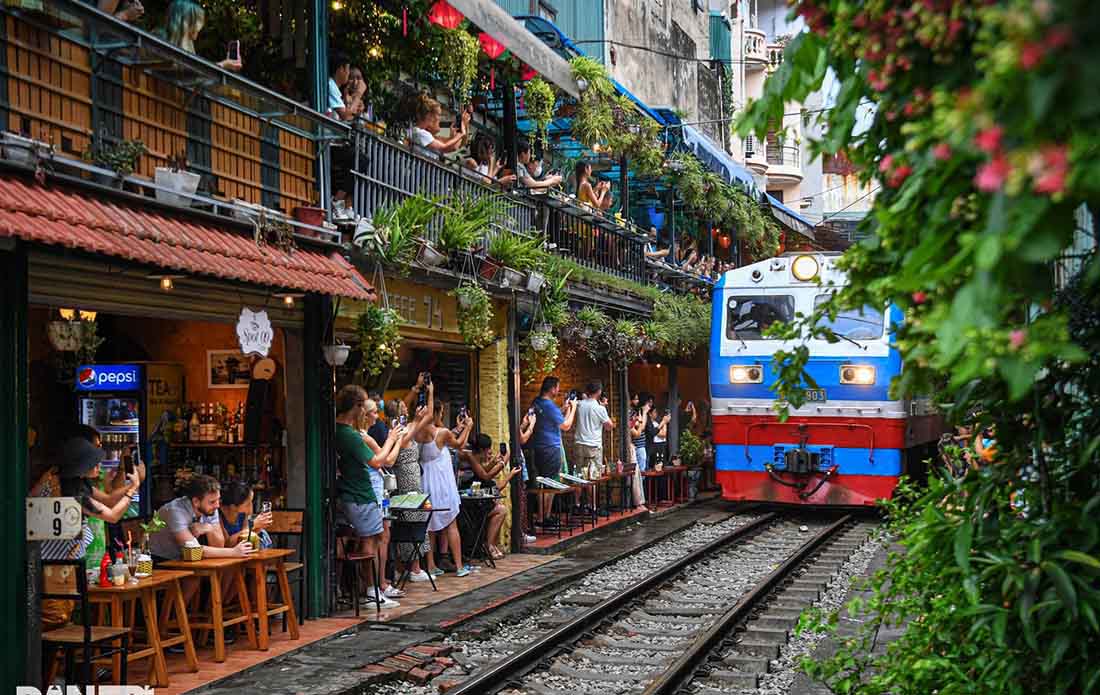
The advantages of this transportation in Vietnam are reasonable prices, faster travel speeds compared to other road vehicles and high safety levels. The train stations are usually in or near the city center.
You can purchase train tickets at the station ticket counter, through a travel agency or book and pay for tickets online via the website of Vietnam Railways. After successfully booking your tickets, the information will be sent to you according to your registered information. You can either print out the ticket or show it on your mobile phone to the train ticket inspector.
Train ticket price of some popular routes:
- Hanoi - Ho Chi Minh City: 1,100,000 - 1,500,000 VND ( about 47 - 64 USD)
- Hanoi - Sapa: 550,000 VND ( about 24 USD)
- Ho Chi Minh City - Nha Trang: 320,000 - 600,000 VND ( about 14 - 26 USD)
- Da Nang - Hue: 111,000 - 186,000 VND ( about 5 - 8 USD)
Types of seats on trains:
- Sleeping berths - often installed on night trains or long-distance train routes, allowing passengers to comfortably rest and sleep overnight on the train. There are 6-berth and 4-berth compartments.
- Soft seats - comfortable seats with thick cushions that can be reclined. They are commonly found on medium and long-distance train routes.
- Hard seats - typically found on short-distance train routes. These seats are often sturdy and cannot be reclined.
Some further information that may be useful for you when using this transportation in Vietnam:
- Passengers will be allowed to bring a maximum of 20kg (about 44 pounds). Any extra luggage will need to be checked and the cost will be based on weight.
- You better have a proper meal before getting on board. The train only offers some snacks, instant noodles, hot water and drinks.
- Each carriage has a restroom and a hand-washing sink. You can brush your teeth, wash your hands and face, but you cannot take a shower there.
- The air conditioning on the train is centralized and typically set to a low temperature that may make you feel cold. Consider bringing a jacket or scarf by your side to keep your body warm.
- The train frequently produces noise that may disturb your sleep.
By bus
The bus can be regarded as the most popular mode of transportation in Vietnam used for traveling due to its flexible mobility, comfort and affordable prices. There are 2 main types of bus: city bus and long-distance bus.
City bus
City bus is a form of public transport in Vietnam at a very reasonable price. There are a variety of bus routes passing through a diverse network of locations. Buses can be used for traveling within the city or reaching nearby areas.
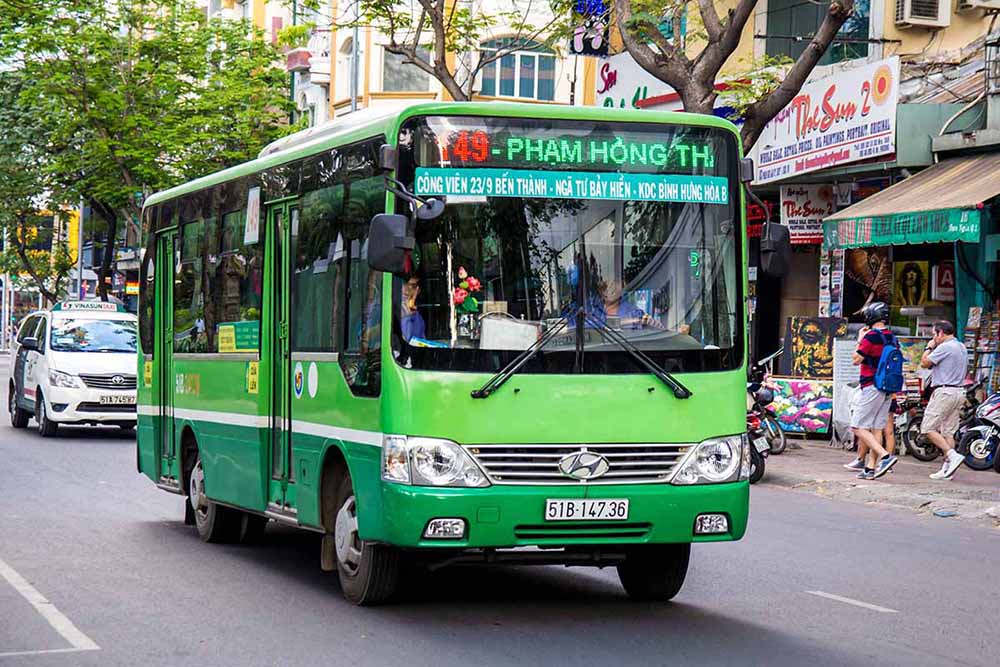
The buses normally have 20 - 30 seats and standing space. All buses have air conditioning, comfortable seats, emergency hammers and fire extinguishers. On the bus, there is a conductor to help you buy tickets. The average ticket price for city buses is around 7,000 - 8,000 VND (0.3 USD).
This public transport in Vietnam is convenient and can give you a great city tour view. Bus tickets can be purchased on a daily, weekly, or monthly basis. For a monthly bus ticket, you can buy at ticket selling points in cities or online through apps and the stamp will be delivered to your address.
Tips for you when using this transportation in Vietnam:
- You can track the bus route and find your bus to move within the city by using Google Maps or bus apps. When you arrive, there will be announcements on the speakers, but they may not be in English. Keep track of the bus route on Google Maps or apps to know your get-off point.
- Buses can get very crowded during rush hours, from 7 am - 9 am and 4:30 pm - 7 pm in major cities. Bus operation hours are often from 5:30 am - 9:30 pm.
- Traveling by this transportation in Vietnam is a great way to get around, but it can take a long time or get crowded in peak hours so do not use it when you are in a hurry.
Long bus
Vietnam has an extensive and efficient long-distance bus system, which makes traveling to destinations throughout the country favorable. This type of transportation in Vietnam is widely preferred by travelers. It is fast, affordable, comfortable and well- equipped, which makes your journey pleasant.
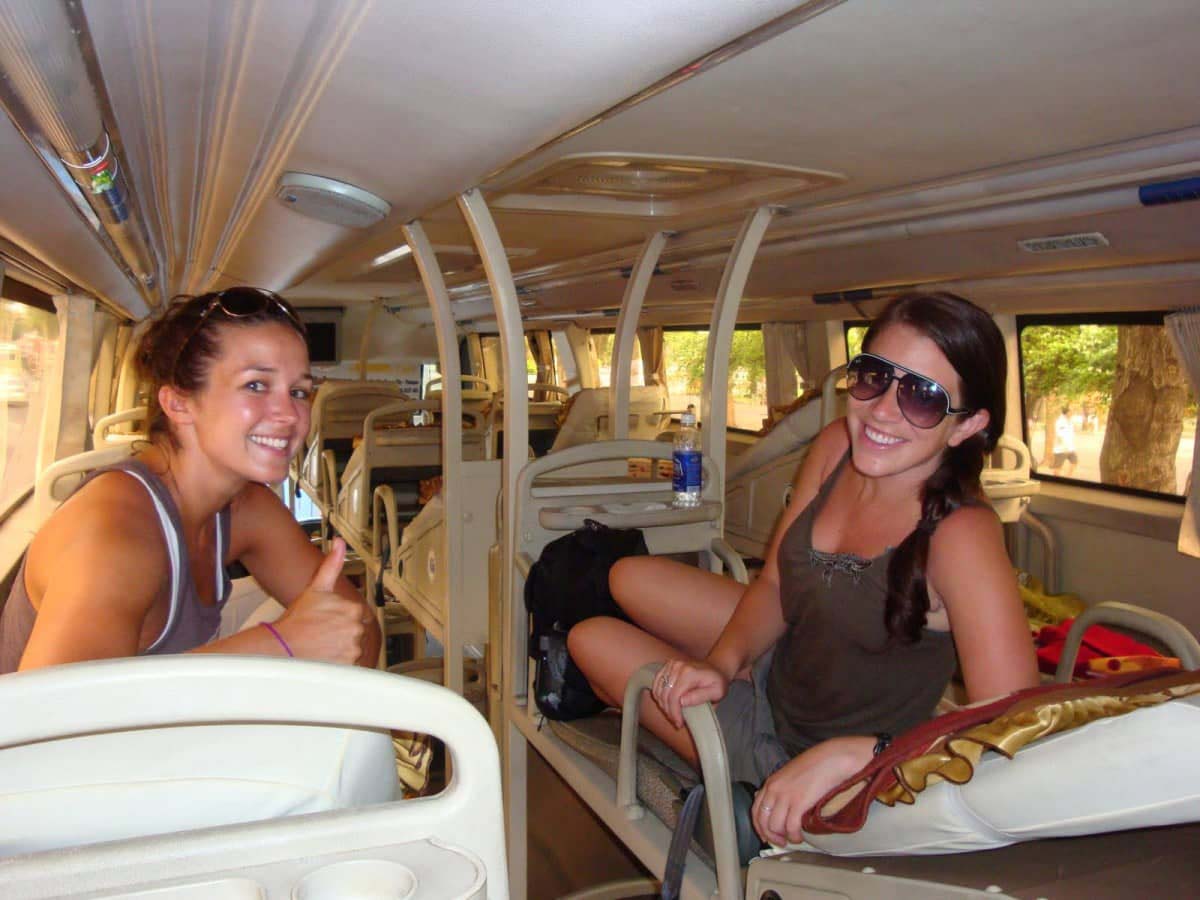
The designs of these buses are compact and suitable for moving through Vietnam's varied terrains. Its schedules are flexible, with multiple trips available throughout the day to different destinations. Long buses typically have more seating capacity than city buses, ranging from 10 to 60 seats, suitable for long-distance travel and not just intercity commutes.
Here are some tips for you:
- If your destination can be reached in a short time, you can select a sitting bus; if you are traveling to a far-off destination, choose a bus with lying beds.
- Private seats offer additional amenities on the bus such as personal space, individual TV, reading light, personal USB charging points, free Wi-Fi, drinks, wet towels, etc.
- You can purchase bus tickets online or visit stations to buy tickets. The bus conductor typically reminds passengers about their destination, so communicate with them accordingly.
Explore more captivating stories of Vietnam travel guide.
By riding share services
Taxi
This transportation in Vietnam is plentiful, especially in large and tourist cities such as Hanoi, Quang Ninh, Da Nang, and Ho Chi Minh City. They are a convenient option for short distances, in a short time or when traveling with a lot of luggage. If you are traveling to other provinces, you should choose a long-distance bus to get a more reasonable price.
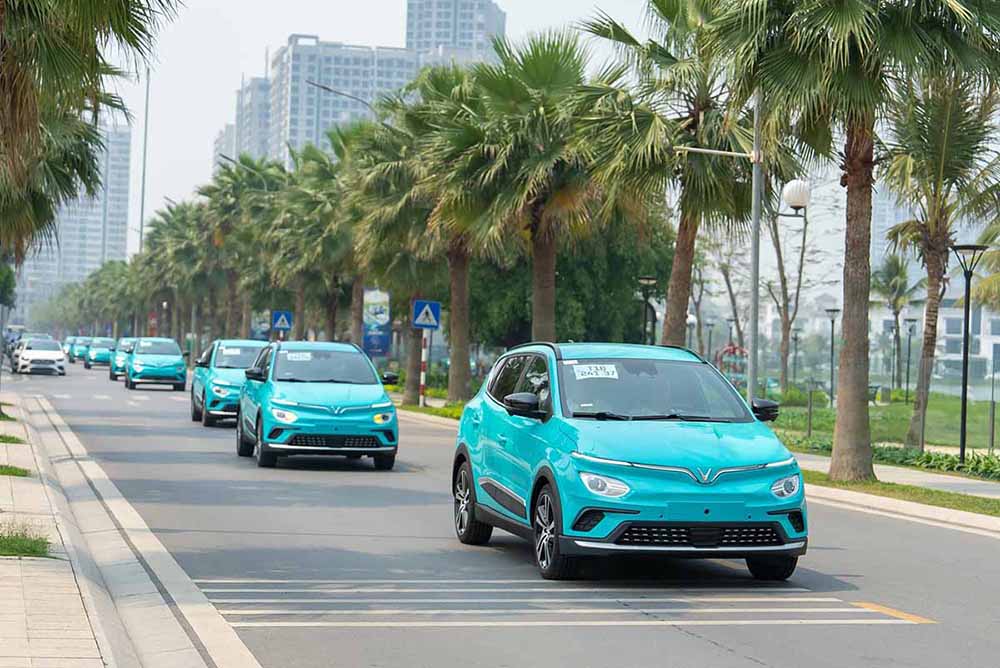
Our pieces of advice for you:
- You can hail a random taxi on the street or use popular taxi apps in Vietnam such as Grab, Bee and Gojek to book a ride.
- We recommend booking a taxi online to find out the exact fare, driver information and distance. Before getting into the car, it is important to check the license plate number, car model, driver's face and name to ensure you are getting into the correct car.
- Taxis in Vietnam are charged by kilometer and usually have seats for 4 - 7 people.
- After getting off the taxi, remember to carefully check the seat and luggage to make sure that you have not left anything in the car.
Grab
GrabBike is a popular motorbike ride-hailing service in Vietnam that operates similarly to Uber and Lyft. It allows individuals to order a motorcycle ride through a mobile app. Grab is a convenient choice of transportation in Vietnam for those who do not have a lot of luggage and want to save time. It also has a reasonable price. Riding on a motorcycle in Vietnam can provide you with an interesting experience to feel the city vibe.
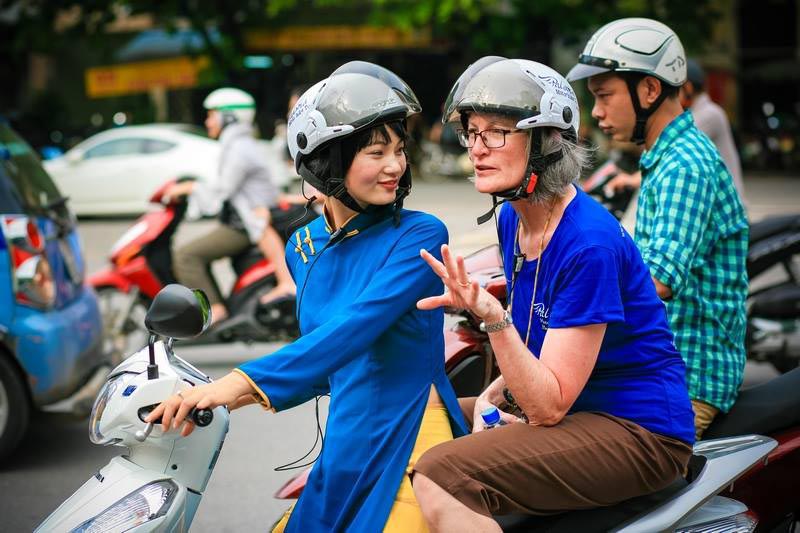
Things you should note for your trip:
- To use the service, you will need to download the Grab app and create an account. Once you have completed the registration process, you can input your destination and get matched with a nearby technology motorcycle driver who can pick you up and take you to your destination.
- There are some traditional drivers who do not work under a Grab company name, it can be difficult to recognize them as they do not wear uniforms. Therefore, our advice for you is still to book online and carefully check the license plate and driver's name before getting on the vehicle.
How about renting your own motorbike
One of the most experimental types of transportation in Vietnam for travelers is renting a motorbike. Renting a motorbike is affordable and convenient. This way allows you to explore at your own pace with its flexibility and the ability to navigate through traffic easier than a car, bringing you an authentic local experience.

There are two types of motorbike commonly used for transportation in Vietnam: the lightweight manual transmission motorcycle, suitable for all kinds of terrain, especially mountainous regions and the smooth automatic transmission motorcycle, ideal for flat city roads. Depending on your needs, you can choose the appropriate type of motorbike.
To rent this transportation in Vietnam, you will need an International Driver's License or Vietnam License in some places, personal identification documents, payment and insurance. The common rental prices are normally between 100,000 - 200,000 VND/day (about 4 - 9 USD) depending on the type of motorbike from 110cc - 125cc. For a 150cc motorbike, the prices could go up to 500,000 - 600,000 VND/day (about 21 - 25 USD).
Our tips for you when using this transportation in Vietnam:
- You can negotiate a suitable rental price.
- Make sure the bike you choose is in good condition and has all the necessary documents such as helmets, raincoat and petrol. Take pictures of any existing damages to avoid any confusion later. Make sure to return the bike on time to avoid any late fees.
- Vietnamese traffic can be chaotic, so familiarize yourself with the traffic rules and signs before starting your ride. If you can, go with locals or a friend familiar with participating in traffic in Vietnam.
- Address for renting motorbikes in Hanoi:
- Hanoi Motor Tour ( Number 22, 463 Alley, Doi Can, Ba Dinh, Hanoi).
- Number 26, 35 Lang Street, Dong Da, Hanoi.
- BonBon Motor (246 Ton Duc Thang, Dong Da, Hanoi).
- 24D Ta Hien, Hoan Kiem, Hanoi.
- Address for renting motorbikes in Ho Chi Minh City:
- Style Motorbikes (368 Vo Van Kiet, District 1)
- Tigit Motorbikes (508/34 Cach Mang Thang 8 Street, Ward 11, District 3)
- 263 Nguyen Trong Tuyen, Ward 10, Phu Nhuan District.
- 2 Ton That Thuyet Street, Ward 18, District 4.
Recap
The transportation system in Vietnam has been improving significantly, providing a wide range of efficient ways for travelers to get around the country. Depending on your budget, destination, and personal preferences, you can choose from different modes of transportation available in Vietnam that suit your needs and provide you with the best experience during your stay here. If you need any support, feel free to let us - NewAsiaTour assists you along your journey in Vietnam.



